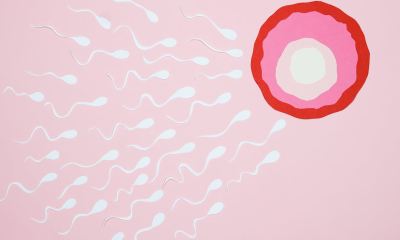Mental Health
How To Cope with Anxiety Disorder in Daily Life for Well-being: Strategies and Practices
Daily Anxiety Disorder, also known as chronic anxiety, is characterized by persistent and excessive worry or fear on a daily basis, impacting a person’s overall well-being.

Table of Contents
Introduction
In the complex dance of day to day existence, anxiety disorder frequently arises as an unwanted accomplice, stirring up misgivings about our viewpoints, sentiments, and activities. From the second we awaken to the time we allow our heads to re-energize, the flows of daily anxiety can back and forth movement, affecting our encounters in both unpretentious and significant ways.
In this extensive investigation, we will jump into the nuanced scene of uneasiness in day to day existence, disentangling its complexities, looking at normal triggers, and giving viable ways of dealing with stress to explore the frequently fierce waters of the restless psyche.
The Complex Tapestry of Daily Anxiety Disorder
1. Morning Butterflies: The Wake-Up Call
The primary beams of daylight channel through the draperies, flagging the beginning of another day. For some, nonetheless, the morning is joined by a feeling of disquiet and expectation. The psyche races with contemplations of the day ahead—assignments to finish, obligations to satisfy, and likely difficulties to confront.
Coping Strategy: Lay out a quieting morning schedule that incorporates care rehearses, like profound breathing or contemplation. Setting positive goals for the day can assist with mooring the psyche in a more sure and grounded state.
2. Working environment Tensions: The Expert Difficult exercise
As the day unfurls, the working environment frequently turns into a significant field for anxiety. Cutoff times, gatherings, and the requests of partners or bosses can add to uplifted feelings of anxiety. The strain to perform, measure up to assumptions, and explore work environment elements adds layers to the day to day embroidery of nervousness.
Method for dealing with especially difficult times: Separate assignments into sensible objectives and focus on them. Lay out limits to keep work from pervading individual time. Enjoy short reprieves for careful breathing or a concise stroll to reduce pressure.
3. Exploring Social Collaborations: The Dance of Assumptions
Social collaborations, whether face to face or virtual, can be a wellspring of uneasiness for some people. The craving to be acknowledged, apprehension about judgment, and the strain to measure up to cultural assumptions can transform social commitment into complex moves of uneasiness.
Method for dealing with hardship or stress: Practice careful mindfulness during social connections. Center around the current second, connect effectively in discussions, and advise yourself that measuring up to each expectation is alright not. Building an encouraging group of people of understanding companions or relatives can likewise give a wellbeing net.
4. Computerized Over-burden: The Risks of Availability
In our hyper-associated world, the consistent deluge of data through advanced gadgets can add to data over-burden and tangible overpower. Virtual entertainment, messages, and notices can become perpetual triggers for uneasiness, making a feeling of being continually nervous.
Way of dealing with hardship or stress: Put down stopping points on innovation use. Plan assigned times for browsing messages and virtual entertainment, and consider executing innovation breaks over the course of the day. Establish a quieting computerized climate by organizing your internet based spaces.
5. Evening Reflections: The Shadows of the Brain
As the day slows down, the brain frequently moves into an intelligent mode. Considerations about the day’s occasions, irritating issues, or expectations for the following day can surface, possibly heightening uneasiness during the night hours.
Survival technique: Participate in moderate muscle unwinding or careful exercises before sleep time. Journaling can be a useful device to handle contemplations and feelings. Lay out a quieting evening schedule to indicate to the brain that now is the ideal time to loosen up.
Understanding Uneasiness Triggers in Day to day existence
1. Vulnerability and Future Worries
The obscure future is a typical favorable place for nervousness. Vulnerability about impending occasions, choices to be made, or one’s way of living can produce a feeling of trepidation and disquiet.
Way of dealing with stress: Spotlight on what you have some control over right now. Separate future worries into noteworthy stages. Embrace the mentality that vulnerability is a characteristic piece of life and a chance for development.
2. Compulsiveness and Feeling of dread toward Disappointment
The persistent quest for flawlessness and the apprehension about disappointment can fuel uneasiness. Setting unreasonably elevated expectations for one and review botches as devastating can make a steady propensity of stress.
Survival technique: Develop a mentality that embraces defect as a piece of the human experience. Put forth practical objectives and perceive that disappointment is much of the time a venturing stone to progress. Practice self-empathy and celebrate little triumphs.
3. Social Correlation and Judgment
The inescapable culture of examination, enhanced by virtual entertainment, can set off deep-seated insecurities and self-question. The apprehension about being judged or not comparing cultural norms can add to social anxiety.
Way of dealing with stress: Limit openness to social examination triggers. Practice self-approval and spotlight on your own excursion. Participate in exercises that encourage fearlessness and self-articulation.

4. Overpower from Performing various tasks
Shuffling various undertakings at the same time can prompt mental over-burden and elevated feelings of anxiety. The assumption for steady efficiency and the strain to perform various tasks productively can add to everyday anxiety.
Survival method: Focus on errands and spotlight on each thing in turn. Embrace the idea of single-entrusting, permitting your psyche to draw in with every action completely. Separate larger errands into greater modest, greater affordable advances.
5. Absence of Limits
Obscuring the lines among work and individual life, or being not able to declare individual limits, can add to a feeling of being overpowered. The steady accessibility and assumption for sure fire reactions can worsen uneasiness.
Way of dealing with hardship or stress: Lay out clear limits for work and individual time. Impart these limits to partners and companions. Plan breaks to re-energize and safeguard your own time.
Practical Coping Strategies for Daily Anxiety
1. Careful Relaxing: A Snapshot of Quiet
Take part in careful breathing activities to focus yourself right now. Profound, deliberate breaths can enact the body’s unwinding reaction and give a snapshot of quiet in the midst of tension.
Practice: Put away a couple of moments every day for careful relaxing. Use it as an instrument during snapshots of uplifted pressure or at whatever point you want to ground yourself.
2. Moderate Muscle Unwinding (PMR): Loosening up Pressure
Moderate Muscle Unwinding includes methodically straining and afterward loosening up various muscle gatherings. This strategy can assist with delivering actual pressure and advance unwinding.
Practice: Devote a couple of moments before sleep time to rehearse PMR. Spotlight on each muscle bunch, beginning from your toes and moving gradually up to your head.
3. Careful Mindfulness: Seeing Without Judgment
Practice careful mindfulness by noticing your considerations and sentiments without judgment. This non-critical perception can make a feeling of distance from fears.
Practice: Put away opportunity for careful mindfulness every day. During this training, basically notice your contemplations and feelings without attempting to change or dissect them.
4. Journaling: Uncovering Contemplations and Feelings
Journaling gives an unmistakable outlet to offering viewpoints and feelings. Recording tensions and reflections can bring lucidity and a feeling of delivery.
Practice: Make journaling a piece of your everyday daily schedule. Use it as an instrument for self-reflection and investigation of your uneasiness triggers.
5. Laying out Everyday practice: Making Consistency
Make a day to day schedule that gives construction and consistency. A deep rooted routine can lessen the capriciousness that might add to nervousness.
Practice: Plan a morning and night schedule that suits your inclinations and way of life. Stick to predictable wake-up and sleep time plans.
6. Laying out Sensible Objectives: Observing Advancement
Separate undertakings into more modest, feasible objectives. Setting reasonable assumptions takes into consideration a feeling of achievement and decreases the probability of feeling overpowered.
Practice: Focus on undertakings and put forth feasible objectives for the afternoon. Celebrate little triumphs and recognize your endeavors.
7. Actual work: Empowering the Brain
Take part in ordinary actual work to deliver endorphins, which can reduce uneasiness and further develop mind-set. Practice is an integral asset for overseeing pressure.
Practice: Integrate actual work into your daily schedule, whether it’s a morning run, a night yoga meeting, or a noon walk.
8. Establishing Strategies: Mooring to the Present
Use establishing strategies during snapshots of uplifted uneasiness. Zeroing in on your faculties or clutching an item can moor you to the current second.
Practice: Learn and work on establishing methods that impact you. Use them on a case by case basis to take yourself back to the present time and place.
9. Social Association: Building an Encouraging group of people
Discuss your mind with confided in partners or relatives. Building an encouraging group of people gives an outlet to communicating feelings and getting understanding.
Practice: Develop significant associations with others. Take part in transparent discussions about your viewpoints and sentiments.
10. Restricting Energizers: Directing Admission
Diminish admission of energizers, for example, caffeine and nicotine, which can add to expanded uneasiness. Balance or end of these substances can decidedly affect by and large prosperity.
Practice: Screen your admission of energizers and be aware of their consequences for your uneasiness levels. Think about choices like natural teas or decaffeinated choices.
11. Careful Eating: Relishing the Experience
Practice careful eating by focusing on the taste, surface, and smell of your food. This careful way to deal with feasts can transform eating into a quieting custom.
Practice: Devote a couple of moments to careful eating during dinners. Center around the tangible experience of each nibble.
12. Making an Unwinding Space: Planning Serenity
Lay out a quieting space at home with agreeable components. This assigned space can act as a shelter during snapshots of overpower.
Practice: Assign a corner or room as your unwinding space. Fill it with things that bring solace, like pads, delicate lighting, or relieving fragrances.
13. Figuring out how to Say No: Declaring Limits
Put down stopping points and figure out how to decline extra responsibilities when required. The capacity to say no is an essential part of keeping up with equilibrium and decreasing overpower.
Practice: Assess your responsibilities and needs. Practice confidence in communicating your cutoff points and be aware of your energy levels.
14. Mental Rebuilding: Testing Negative Considerations
Effectively challenge and reevaluate negative contemplations that add to anxiety. Mental rebuilding includes changing idea examples to advance a more certain outlook.
Practice: Distinguish repeating negative contemplations and challenge them with proof in actuality. Develop an additional decent and reasonable viewpoint.
15. Proficient Help: Looking for Direction
In the event that nervousness perseveres or becomes overpowering, look for help from a specialist or guide. Proficient help can give custom-made methodologies and a place of refuge to investigate and oversee anxiety.
Practice: Be proactive in looking for proficient help if necessary. Treatment can offer important experiences, adapting devices, and a strong organization in exploring uneasiness.
Incorporating Coping Strategies into Daily Life
1. Morning Schedule: An Establishment for the Afternoon
- Begin the day with careful breathing or a short contemplation meeting.
- Set positive aims for the day ahead.
2. Work environment Systems: Adjusting Pressure and Efficiency
- Enjoy short reprieves for careful breathing or a fast walk.
- Make a quieting work area with individual contacts.
3. Supper time Customs: Sustaining the Body and Brain
- Practice careful having during lunch or supper.
- Use supper time as a chance for unwinding and pleasure.
4. Evening Wind-Down: Slipping into Soothing Rest
- Participate in moderate muscle unwinding before sleep time.
- Consider the day through journaling.
5. Social Co-operations: Supporting Associations
- Talk about your thoughts with companions or relatives.
- Focus on quality time with friends and family to fabricate an emotionally supportive network.
6. Consolidate Development: Stimulating the Body
- Plan standard active work, for example, a morning walk or night yoga.
- Pick exercises you appreciate to make practice a positive encounter.
7. Innovation Breaks: Making Computerized Limits
- Enjoy reprieves from screens to diminish tactile excitement.
- Put down stopping points on innovation use, particularly before sleep time.
8. Week after week Reflection: A Snapshot of Interruption
- Commit time every week for self-reflection.
- Assess survival techniques and change depending on the situation.
9. Customary Registrations: Careful Self-Reflection
- Check in with your self over the direction of the day.
- Recognize your feelings and address uneasiness expeditiously.
10. Focus on Taking care of oneself: A Promise to Prosperity
- Incorporate taking care of oneself practices into your daily schedule.
- Comprehend that taking care of oneself isn’t extravagance however a crucial part of mental prosperity.
Conclusion: Exploring the Rapids with Versatility
Understanding and adapting to uneasiness in day to day existence is a continuous excursion that requires mindfulness, persistence, and a pledge to prosperity. By disentangling the intricacies of everyday uneasiness, distinguishing triggers, and consolidating viable survival techniques, people can explore the flows with more prominent flexibility and a feeling of control.
It’s critical to perceive that overseeing anxiety is a remarkable and individual cycle. What works for one individual might contrast for another, and the adequacy of survival methods might develop over the long haul. Looking for proficient help when required is a proactive move toward acquiring bits of knowledge, creating adapting instruments, and encouraging a more profound comprehension of one’s nervousness scene.
As you leave on this excursion of exploring the rapids of day to day existence, may these survival techniques become significant friends, directing you toward a more quiet and stronger condition. Recollect that the rhythmic movement of everyday difficulties is a common human encounter, and through deliberate practices and self-sympathy, you can develop a feeling of harmony in the midst of life’s intricacies.
Video: Generalized anxiety disorder (GAD) – Causes, Symptoms & Treatment
Video: How to cope with anxiety | Olivia Remes | TEDxUHasselt
FAQ on the Daily Anxiety Disorder
What is daily anxiety disorder?
Daily Anxiety Disorder, also known as chronic anxiety, is characterized by persistent and excessive worry or fear on a daily basis, impacting a person’s overall well-being.
What are the symptoms of daily anxiety disorder?
Symptoms may include constant worrying, restlessness, irritability, difficulty concentrating, muscle tension, and sleep disturbances.
How is daily anxiety disorder diagnosed?
Diagnosis typically involves a thorough assessment by a mental health professional, considering the duration and intensity of anxiety symptoms.
What causes daily anxiety disorder?
The exact cause is often a combination of genetic, biological, environmental, and psychological factors.
Can daily anxiety disorder be treated?
Yes, it can be treated. Treatment may include therapy, medication, lifestyle changes, and stress-management techniques.
What is the difference between daily anxiety and occasional stress?
Daily anxiety involves persistent and heightened worry, while occasional stress is a normal response to specific situations.
Are there risk factors for developing daily anxiety disorder?
Family history, trauma, chronic stress, and certain medical conditions can increase the risk.
Can lifestyle changes help manage daily anxiety?
Yes, adopting a healthy lifestyle, including regular exercise, a balanced diet, and sufficient sleep, can contribute to anxiety management.
Is medication necessary for treating daily anxiety disorder?
It depends on the severity of symptoms. Medication may be recommended in conjunction with therapy for some individuals.
How can I support someone with daily anxiety disorder?
Offer understanding, encourage professional help, and be patient. Avoid judgment and provide a supportive environment.
Mental Health
How to Overcome Phobias: 15 Positive Psychology-Based Strategies That Really Work

Phobias can be deeply disruptive to daily life—limiting where you go, how you behave, and even who you spend time with. Whether it’s a fear of flying, heights, spiders, or public speaking, these intense irrational fears can make life feel smaller and more stressful.
But there’s good news. New research in positive psychology—the science of human flourishing—offers innovative tools and techniques that not only help reduce fear but also rebuild confidence, resilience, and a deeper sense of control.
In this guide, you’ll discover:
- What phobias are and how they develop
- Traditional vs. positive psychology approaches
- A comprehensive list of 15 strategies to overcome phobias
- Tools and resources for long-term recovery
What Are Phobias?
A phobia is an intense, irrational fear of a specific object, situation, or activity. While everyone experiences fear from time to time, phobias are persistent, exaggerated, and often debilitating.
Types of Phobias
- Specific phobias (e.g., fear of spiders, needles, flying)
- Social phobia (social anxiety disorder) – fear of public scrutiny or embarrassment
- Agoraphobia – fear of open spaces or places where escape may be difficult
Common Symptoms
- Rapid heartbeat or palpitations
- Shortness of breath
- Sweating or chills
- Nausea or dizziness
- Feeling out of control or detached from reality
- Urge to escape or flee the situation
What Causes Phobias?
Phobias develop due to a mix of biological, psychological, and environmental factors.
🧬 Genetic Predisposition
Some people are more biologically wired to experience anxiety or fear. If a close family member has a phobia, you might be more susceptible too.
🧠 Learned Behavior
Negative experiences—like being bitten by a dog or getting stuck in an elevator—can condition the brain to associate fear with that stimulus.
🧒 Childhood Influence
Overprotective parenting or growing up around anxious caregivers can lead to phobia development.
🧪 Neurological Factors
Hyperactivity in the amygdala (the brain’s fear center) has been linked to exaggerated fear responses and difficulty regulating emotions.
Traditional Treatments for Phobias
Psychologists have successfully used a range of evidence-based treatments to help people manage and even eliminate phobias. These include:
🧠 1. Cognitive Behavioral Therapy (CBT)
Helps individuals recognize and change irrational thought patterns that fuel fear.
🎯 2. Exposure Therapy
Gradual exposure to the feared object or situation to desensitize the mind and reduce fear responses.
💊 3. Medication
Anti-anxiety medications or beta-blockers may be used in short-term, high-stress scenarios (e.g., public speaking), but are not a long-term cure.
While effective, many of these therapies focus on reducing symptoms. Positive psychology adds another layer: it focuses on building inner strength, emotional resilience, and growth.
Why Use Positive Psychology for Phobias?
Positive psychology isn’t about ignoring the fear or “thinking positive.” Instead, it emphasizes:
- Building on strengths, not just fixing weaknesses
- Enhancing emotional intelligence
- Cultivating hope, resilience, and optimism
- Using mindfulness and values-based actions to navigate fear
By integrating these tools with traditional therapies, individuals can experience faster, deeper, and more sustainable healing.
15 Positive Psychology-Based Approaches for Overcoming Phobias
1. Strengths-Based Reflection
Instead of focusing only on what’s “wrong,” identify what’s strong within you. Character strengths like bravery, curiosity, or perseverance can be activated during fearful moments.
Try this: Write about a time when you overcame a challenge. What personal strengths did you use?
2. Gratitude Journaling
Gratitude rewires the brain to focus on safety and abundance rather than danger.
Try this: Each evening, jot down 3 things you’re grateful for—even small wins like “I made it through a stressful day.”
3. Mindfulness and Present-Moment Awareness
Fear often lives in the “what if.” Mindfulness teaches you to anchor into the now.
Try this: Practice body scans or guided meditations when anxiety arises.
4. Hope Mapping
Instead of visualizing disaster, try planning out hopeful, empowering future outcomes.
Try this: Set a long-term goal, outline the steps, and imagine yourself succeeding.
5. Self-Compassion Practices
Phobias often trigger shame or frustration. Self-compassion teaches you to treat yourself like a supportive friend.
Try this: Say, “This is hard, but I’m doing my best, and that’s enough.”
6. Goal-Setting With Micro-Steps
Overcoming fear isn’t about huge leaps—it’s about consistent, small wins.
Try this: If you’re afraid of elevators, your first goal might be just standing near one for 30 seconds.
7. Positive Visualization
Picture yourself succeeding in feared situations. Over time, this trains the brain to expect success.
Try this: Before a triggering event, imagine yourself calm, capable, and grounded.
8. Values Clarification
Fear shrinks life. Values help expand it.
Try this: Ask yourself, “What do I want more than I want to avoid fear?” Then act in alignment with that.
9. Flow Activities
Engaging in absorbing hobbies (like art, music, or dance) lowers anxiety and boosts positive emotion.
Try this: Schedule weekly “flow time” to help regulate your nervous system.
10. Resilience Journaling
Track how you bounce back from stress. Over time, this builds confidence in your ability to recover.
Try this: After a challenge, write down: What happened? How did I cope? What would I do differently?
11. Empathy-Based Reflection
Sometimes we fear judgment. Reflecting on shared human experience reduces isolation.
Try this: Remind yourself: “Many people have fears. I’m not alone, and I’m not broken.”
12. Emotion Labeling
Naming emotions reduces their intensity—a concept called “name it to tame it.”
Try this: Say out loud, “I feel anxious, but that’s just a feeling—it will pass.”
13. Positive Reframing
Instead of “I’m weak for feeling scared,” try, “I’m facing something hard—and that’s brave.”
14. Social Connection
Talk with others who’ve overcome similar fears. Connection can inspire and normalize your journey.
Try this: Join an online group or share your story with a trusted friend.
15. Celebrate Tiny Wins
Every small victory rewires your brain. Celebrate each step, no matter how minor.
Try this: After doing something scary, reward yourself with praise, rest, or something fun.
Recommended Resources
- Books:
- The Happiness Trap by Russ Harris (ACT-based techniques)
- Emotional Agility by Susan David
- Rewire Your Anxious Brain by Catherine Pittman
- Apps:
- Insight Timer (for mindfulness)
- Moodnotes (for CBT-based journaling)
- Sanvello (therapy tools & mood tracking)
- Online Programs:
- PositivePsychology.com’s Emotional Intelligence Toolkit
- Mindful.org’s self-guided meditations
When to Seek Professional Help
Phobias are treatable, and you don’t need to go it alone. If fear is affecting your job, relationships, or daily functioning, consider working with a:
- Licensed therapist (especially CBT or ACT-trained)
- Clinical psychologist
- Psychiatrist (for medication support if needed)
Combining professional help with self-directed positive psychology techniques offers the best of both worlds.
Final Thoughts: You Are More Powerful Than Your Fear
Phobias are not flaws or weaknesses—they are learned responses that can be unlearned. Through a blend of self-awareness, compassion, and science-backed tools, you can begin the process of reclaiming your life from fear.
The path forward doesn’t require perfection—it only asks for progress. And with these 15 positive psychology strategies, you’re well on your way.
Phobia Relief: From Fear to Freedom (See Video)
Mental Health
What Is A Depression Attack? Symptoms, Causes & How To Cope With One

We’re all familiar with the concept of a panic attack — an intense, short-lived burst of fear or anxiety. But what happens when the emotion that floods your mind and body isn’t panic, but deep despair? That’s what many mental health professionals are now referring to as a depression attack.
Unlike general sadness or low mood, a depression attack can feel sudden, heavy, and almost paralyzing. Let’s break down what a depression attack really is, how it differs from other mental health episodes, and what you can do to navigate it with care and control.
What Is A Depression Attack?
A depression attack is an intense and sudden wave of depressive symptoms that can strike seemingly out of nowhere. It can last minutes, hours, or even a couple of days, leaving the person emotionally drained, mentally foggy, and physically exhausted.
According to psychologists, it is not officially listed in the DSM-5 (Diagnostic and Statistical Manual of Mental Disorders), but it’s a term increasingly used in both therapeutic and online mental health communities to describe a real, valid, and deeply overwhelming experience.
This kind of attack can occur in people who have clinical depression or even in those who have never been diagnosed but are under extreme emotional strain.
🧠 Common Symptoms of a Depression Attack
While everyone’s experience with depression may differ, a depression attack can include several of the following symptoms:
- Sudden, intense emotional heaviness
- Overwhelming sadness or hopelessness
- Exhaustion and lack of energy
- Negative self-talk or intrusive thoughts
- Social withdrawal or desire to isolate
- Tearfulness or emotional numbness
- Difficulty concentrating or completing tasks
- Changes in appetite or sleep patterns
Some people describe it as a feeling of being “emotionally suffocated” or “suddenly shut down.”
⚠️ How Is a Depression Attack Different from a Panic Attack?
It’s easy to confuse a depression attack with a panic attack, especially because both can happen suddenly and feel overwhelming. However, they affect different emotional systems.
Depression Attack Panic Attack Rooted in sadness, hopelessness Rooted in fear, anxiety Often slow to peak, but lingers longer Builds fast, but resolves within minutes Emotionally numbing or draining Causes physical symptoms like racing heart Mental fog, social withdrawal Sweating, shortness of breath
Understanding this difference is key to choosing the right coping strategy.
💥 What Triggers a Depression Attack?
Triggers can vary greatly depending on a person’s background, environment, or emotional resilience. Common triggers include:
- Chronic stress – From work, finances, or personal life
- Trauma or emotional overwhelm – Recent or past unresolved trauma
- Grief or loss – Including non-death losses like divorce or job loss
- Loneliness – Lack of emotional support
- Burnout – Emotional, physical, and mental exhaustion
- Hormonal changes – Especially for women during PMS, postpartum, or menopause
Sometimes, there is no clear trigger, which can make the episode even more frightening or confusing.
🧘 How to Cope with a Depression Attack in the Moment
If you feel a depression attack coming on or are already in the middle of one, here are some practical steps to help ground yourself:
1. Pause and Acknowledge
Give yourself permission to feel what you’re feeling without judgment. Naming the experience—“I’m having a depression attack”—can help you take back some control.
2. Engage the Senses
Try sensory grounding: hold an ice cube, take a warm shower, or light a calming candle. Reconnecting with your senses can disrupt mental spirals.

3. Practice Deep Breathing
Slow, diaphragmatic breathing can help calm your nervous system. Try the 4-7-8 method: inhale for 4 seconds, hold for 7, exhale for 8.
4. Reach Out to Someone
You don’t have to go through it alone. A friend, therapist, or mental health hotline can offer emotional anchoring in moments of crisis.
5. Write It Out
Journaling the thoughts and feelings running through your mind can externalize your pain and make it easier to manage.
📞 When to Seek Professional Help
If you’re experiencing depression attacks frequently or they begin to affect your ability to function daily, it’s time to seek professional support. Mental health professionals can provide a diagnosis, treatment plan, and tools to better manage these episodes.
Therapy Options That Help:
- Cognitive Behavioral Therapy (CBT): Helps reframe negative thought patterns
- Dialectical Behavior Therapy (DBT): Focuses on emotional regulation and distress tolerance
- Medication: Antidepressants can be helpful in cases of chronic or clinical depression
Emergency Support: If you are having thoughts of self-harm or suicide, please contact a crisis line or seek immediate help from a local emergency service.
🛠️ Long-Term Prevention Strategies
Once you’ve recovered from a depression attack, implementing long-term wellness habits can help reduce the likelihood of future episodes:
- Maintain a consistent sleep schedule
- Exercise regularly—even walking counts
- Limit alcohol, caffeine, and processed foods
- Practice mindfulness or meditation
- Stay socially connected—even virtual connections matter
- Attend therapy regularly, even when feeling better
Recovery isn’t a straight line. Be kind to yourself on the journey.
🌈 Final Thoughts: You’re Not Alone
Depression attacks are real, valid, and deeply disruptive. But the most important thing to remember is that they are temporary. With the right coping mechanisms and support system, you can find light again—even when everything feels dark.
Whether it’s therapy, community, medication, or self-compassion, your healing is possible. You are not weak for struggling; you are strong for surviving.
If you’re struggling with your mental health, consider speaking with a licensed therapist. Help is out there, and healing is always within reach.
Read More: How To Stress Reduction through Mindfulness Meditation
Happiness
Laugh More Stress Less: The Power of Humor in Happiness
In the perpetual hustle of modern living, we often overlook one of the most potent antidotes to our stress-filled days—humor. It’s the quintessential elixir that can turn even the most dire moments into opportunities for joy.
In the perpetual hustle of modern living, we often overlook one of the most potent antidotes to our stress-filled days—humor. It’s the quintessential elixir that can turn even the most dire moments into opportunities for joy. This extensive exploration into the largely untapped resource of laughter aims to underscore not only the rib-tickling enjoyment it brings but also the robust framework of benefits it adds to our holistic well-being. Also, we learn that, how to work is laugh more stress less?

Table of Contents
The Universal Language of Laughter
From the raucous chuckles that echo through a bustling comedy club to the subtle, knowing smiles exchanged in a quiet conversation, laughter is a universal language understood by all. It transcends cultural nuances and linguistic barriers, forging connections in its shared expression. The infectious nature of laughter weaves a communal thread, fostering a shared experience of merriment that unites us.
Acknowledging the Connection Between Humor and Happiness
The human experience is replete with opportunities to choose humor over solemnity. These choices, however small, can pave the way for happiness. While humor is not a panacea for all of life’s afflictions, it is an indispensable companion that our minds and bodies greatly benefit from.
Previewing the Positive Impact of Laughter on Stress Reduction
In this post, we’ll dissect the multifaceted relationship between humor and happiness, starting with the unequivocal stress-reducing effects of laughter. You’ll discover the physiological changes that occur in the body when laughter takes over, and how these changes act as a powerful shield against the tide of stress.
The Science of Laughter
Exploring the Psychological Benefits of Laughter
Beyond its surface level of therapeutic joy, laughter triggers a cascade of psychological benefits that linger long after the moment has passed. It releases tension, wards off feelings of despair, and creates a buffer against the everyday worries that ail us.
The Release of Endorphins and Stress Reduction
The physical act of laughing triggers the release of endorphins, nature’s own version of a mood-altering substance. These ‘feel-good’ hormones not only provide instant gratification, but they also promote a sense of well-being that encourages resilience in the face of stress.
Laughter as a Natural Mood Elevator
Additionally, laughter brings with it an influx of oxygen-rich air, promoting a play of neurotransmitters that can elevate our mood. It’s a simple, yet potent, way to counter melancholy, even when it feels most pervasive.
Laughter as a Coping Mechanism
The Role of Humor in Dealing with Life’s Challenges
When life throws us a curveball, humor becomes a defense mechanism, a shield against emotional onslaught. This section explores how humor acts as a powerful ally in confronting challenges, helping us find light in moments of darkness.
How Laughter Acts as a Stress Buffer
Understanding the nuances of how humor buffers us from stress is crucial in leveraging its full potential. We unravel the ways it redirects our focus from worries to the lighter side of life, promoting a mental shift that reduces the impact of stressful situations.
Developing a Humorous Perspective on Adversity
It’s not merely about finding humor in external circumstances; it’s about cultivating a perspective that naturally gravitates towards the humorous, making even the most trying hardships more palatable to our minds and hearts.
Social Bonds Through Laughter
Building Connections Through Shared Laughter
The shared experience of laughter is a potent catalyst for forging connections. Whether with friends, family, or even strangers, the echoes of shared mirth can deepen social bonds in ways that mere words often cannot.
The Importance of Humor in Social Relationships
In this section, we take a deep dive into how humor acts as the social glue that binds relationships. Amidst the rites and rituals of social interaction, it’s often the lighthearted exchanges that resonate most profoundly and create lasting memories.
Creating a Positive Atmosphere in Social Interactions
Laughter energizes social spaces, setting the stage for positive interactions that can uplift not only individual spirits but also the collective mood of a group.
Humor and Physical Well-Being
The Impact of Laughter on Physical Health
Laughter isn’t just good for the soul; it’s a boon for the body. We explore the various ways in which humor can manifest physical benefits, from improved cardiovascular health to enhanced muscle relaxation.
Boosting the Immune System Through Laughter
The relationship between laughter and a robust immune system is no joke. By stimulating antibody cells, laughter becomes a formidable defender against the onset of illnesses, both chronic and acute.
Laughter as a Natural Relaxation Technique
Lauded as a natural relaxation technique, laughter leads to the reduction of stress-related symptoms and the alleviation of muscle tension. It’s as though each bout of laughter is a mini spa day for the body, rejuvenating and invigorating from the inside out.

Incorporating Humor into Daily Life
Finding Humor in Everyday Situations
Life itself is a theater of the absurd, rife with opportunities for finding the humor in the humdrum. This section imparts strategies for tweaking our perspective to notice and appreciate the comedic underpinnings of routine.
Cultivating a Light-hearted Approach to Challenges
Each challenge is an invitation for the clever application of humor. Discover how approaching obstacles with a light touch can transform the most daunting tasks into manageable puzzles, ripe with potential for amusement.
Incorporating Playfulness into Routine Activities
By infusing even the most mundane activities with playfulness and light-heartedness, we can turn daily chores into opportunities for joy. This is the essence of living a life peppered with laughter and an excellent avenue for reducing stress.
Types of Humor and Individual Preferences
Understanding Different Styles of Humor
Not all humor is created equal. Diving deep into the various genres of comedy, we explore the wide spectrum of what tickles the funny bone and why certain styles resonate more strongly with individuals.
Embracing Personal Preferences in Comedy
Each of us has a unique comedic compass that points toward our personal preferences. In this section, we encourage readers to revel in their own brand of humor, asserting that there’s no one-size-fits-all when it comes to laughter.
The Power of Tailoring Humor to Individual Tastes
When humor is tailored to fit individual tastes, it becomes a laser-focused tool for enjoyment and, subsequently, stress reduction. Adaptive humor is not only more effective but also more endearing, creating a more personal and impactful experience.
Laughter Yoga and Therapeutic Laughter
Exploring Laughter Yoga as a Stress-Relief Practice
Rooted in the belief that intentional laughter yields the same benefits as natural laughter, Laughter Yoga is an exercise in mirth that has gained popularity as a wellness practice. We unpack the philosophy behind this unique modality and its potential as a stress-relieving practice.
The Therapeutic Benefits of Laughter Workshops
Laughter workshops offer a structured setting to engage in the act of laughing, with the goal of reaping the many therapeutic benefits. Insights from these workshops underscore the social and emotional aspects of communal laughter.
Integrating Laughter into Mindfulness Practices
Laughter and mindfulness may seem at odds, but when interwoven thoughtfully, they form a sublime tapestry of present-moment joy. This section explores practical ways to integrate laughter into mindfulness practices for an enriched experience.
Humor in the Workplace
Fostering a Positive and Humorous Work Environment
Workplaces that prioritize and allow for humor to flourish are often the most pleasant and productive. Discover the managerial and cultural strategies that cultivate an environment where laughter is embraced.
Using Humor to Improve Team Dynamics
In the realm of teamwork, humor is not just a luxury; it’s a critical component. Teams that laugh together are often the most cohesive, adaptable, and innovative. Explore the ways in which team dynamics can be improved through humor.
The Role of Leadership in Encouraging a Lighthearted Workplace
Leaders set the tone for the work atmosphere. We showcase examples of leadership that have successfully employed humor as a tool for engagement and morale-boosting, inspiring others to follow suit.
Humor and Mental Health
Laughter as a Tool for Managing Anxiety and Depression
When it comes to mental health, laughter is an unsung hero. Its unassuming nature belies its prowess as a coping mechanism for those managing anxiety and depression. We offer practical insights and suggestions for incorporating humor into one’s mental health toolkit.
The Therapeutic Role of Comedy in Mental Health
Comedy isn’t just entertainment; it’s therapy. This portion of the post highlights the role of humor in the mental health industry, from therapeutic stand-up comedy to scripted humor implemented as part of treatment.
Incorporating Humor into Self-Care Routines
Self-care without joy is an incomplete practice. We provide tips for infusing self-care routines with humor, ensuring that they become not arduous tasks, but delightful rituals that contribute to one’s overall well-being.
Comedy and Cultural Expression
The Role of Humor in Cultural Identity
Cultural humor is a defining aspect of identity and community. From classic comedies to cultural memes, we explore how humor becomes a hallmark of shared experiences, history, and aspirations.
Using Comedy for Social Commentary
Comedy has a way of saying what other mediums cannot. We dissect the art of using humor for incisive social critique, praising the comedians who deftly wield their wit to mirror society’s absurdities.
Appreciating Diversity in Humor
An appreciation for humor requires an open mind and a recognition of the diversity of comic sensibilities. We champion the adage that laughter is best when shared, and the more varied the laugh, the richer the experience.
Family Humor and Bonding
Creating a Playful Family Culture
Families that laugh together often stay together in spirit, if not in proximity. Here, we provide strategies for building a family culture rooted in playfulness and a shared love of laughter.
The Influence of Humor on Parent-Child Relationships
Humor can be a parent’s most disarming and effective tool. We explore the delicate balance of using humor to connect with children, fostering deep, meaningful relationships built on mutual respect and joy.
Nurturing a Joyful Family Atmosphere
Joy doesn’t just happen; it’s nurtured. This section is brimming with tips for creating a home environment that resonates with laughter, from family game nights to impromptu joke sessions.
Laughter Challenges and Laughter Clubs
Participating in Laughter Challenges for Community Building
Laughter that ripples across the community can have a profound impact, transcending the individual to uplift the collective. Learn about laughter challenges that have become a gathering point for communities near and far.
The Concept of Laughter Clubs and Group Laughter
Beyond the power of the solo laugh lies the resounding strength of a group’s laughter. Be inspired by the phenomenon of laughter clubs and the sense of belonging they bestow on their members.
Spreading Laughter for Collective Well-being
The notion that laughter is contagious is taken to a larger, even grander level in this section, as we explore how collective laughter can promote a sense of well-being that ebbs and flows throughout a community.
Success Stories and Humor Transformations
Real-life Experiences of Using Humor for Happiness
True stories of individuals who have harnessed humor to overcome their trials and tribulations illuminate the path to a happier life. Prepare to be uplifted and inspired by their narratives of transformation through laughter.
Positive Changes in Mental and Emotional Well-being
Listeners of these tales of transformation will be encouraged to recognize the seeds of humor in their own lives and the potential they hold for change.
Practical Tips and Lessons Learned from Embracing Humor
Derive actionable insights and pearls of wisdom from those who have walked the path towards a more humorous existence. Their pragmatic tips will serve as a compass for your humor-infused journey.
The Future of Happiness Through Humor
Embracing Laughter as a Lifelong Companion
Laughter isn’t merely a temporary reprieve from life’s challenges; it’s a steadfast companion that, when embraced fully, can alter the course of our existence. We look forward to a future where laughter is not just encouraged but expected as an integral part of well-living.
Inspiring a Humorous and Joyful Global Community
Here, we cast a vision of a world where laughter is the common thread that binds us, a world community characterized by its proclivity for humor and the ensuing joy it brings.
The Ongoing Journey of Stress Reduction Through Laughter
The quest for stress reduction through laughter is a lifelong one, punctuated by joyful moments that serve as beacons along the path. We encourage you to keep laughing, keep exploring, and most of all, keep living.
Conclusion
In summary, humor is far more than a reaction to life’s absurdities; it’s a proactive stance, a way of life that can enhance our experience immeasurably.
The evidence is overwhelming—laughter contributes to our health, happiness, and overall well-being. We urge you to take charge of your stress levels and infuse more laughter into your life.
The path to a happier and healthier life is one you tread with each chuckle, chortle, and full-throated guffaw. Join us as we revel in the wondrous, stress-reducing power of humor and commit to its ceaseless cultivation in our lives and communities.
By weaving together practical advice, inspirational anecdotes, and scientific understanding, our exploration into the laughter-laden landscape of human happiness is a testament to the simple magnificence of humor. It’s an invitation to cast off the weight of worry in favor of a more buoyant, laughter-lit existence.
-

 Personal Care8 months ago
Personal Care8 months agoWhy Regular Massages Could Be the Game-Changer Your Body and Mind Crave
-

 Mental Health7 months ago
Mental Health7 months agoHow to Overcome Phobias: 15 Positive Psychology-Based Strategies That Really Work
-

 Lifestyle7 months ago
Lifestyle7 months agoWhen Is It Time To Get a Divorce? Emotional, Mental & Practical Signs to Know
-

 Fitness7 months ago
Fitness7 months ago6 Quick Morning Exercises to Burn Belly Fat All Day
-

 Mental Health7 months ago
Mental Health7 months agoWhat Is A Depression Attack? Symptoms, Causes & How To Cope With One
-

 Lifestyle7 months ago
Lifestyle7 months agoHow to Improve Egg Quality for Fertility: Science, Lifestyle and Expert Tips
-

 Food7 months ago
Food7 months agoHealthy Rice Varieties: Nutrition and Health Benefits
-

 Personal Care7 months ago
Personal Care7 months agoHow to Reparent Your Inner Child: Healing and Self-Compassion


Pingback: Benefits of Outdoor Exercise: Fit with Nature